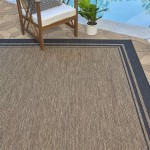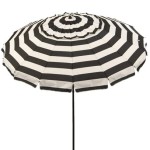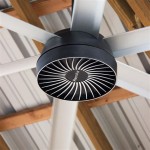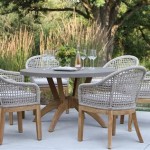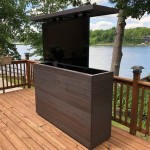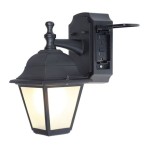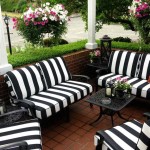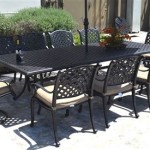Best Outdoor Non-Slip Stair Treads: Enhancing Safety and Durability
Outdoor stairs are frequently exposed to the elements, including rain, snow, ice, and extreme temperatures. These conditions can create slippery surfaces, increasing the risk of falls and injuries. Investing in durable and effective non-slip stair treads is a crucial step in ensuring the safety of residents, visitors, and employees. This article explores the key considerations when selecting the best outdoor non-slip stair treads, examining various materials, features, and installation techniques.
Understanding the Need for Non-Slip Stair Treads
The primary function of non-slip stair treads is to enhance traction and reduce the likelihood of slips and falls. Outdoor stairways often experience significant foot traffic, further exacerbating the potential for accidents. Selecting the appropriate treads involves a careful evaluation of the environment, the expected level of traffic, and the prevailing weather conditions. Ignoring this proactive safety measure can expose property owners to liability and increase the risk of injury.
Beyond safety, non-slip stair treads also contribute to the longevity and aesthetic appeal of outdoor staircases. By protecting the underlying stair surface from wear and tear, treads help extend the lifespan of the structure. Furthermore, a wide range of materials and designs are available, allowing property owners to enhance the overall appearance of their outdoor spaces.
Key Materials for Outdoor Non-Slip Stair Treads
The effectiveness and durability of outdoor non-slip stair treads are largely determined by the materials used in their construction. Several materials are commonly utilized, each offering distinct advantages and disadvantages.
Rubber: Rubber treads are known for their excellent grip, even in wet conditions. They provide a cushioning effect, making them comfortable to walk on. Rubber is also relatively resistant to weathering and can withstand temperature fluctuations. However, some rubber treads may fade or deteriorate over time, particularly when exposed to direct sunlight. Recycled rubber options are available, offering an environmentally friendly choice. The installation of rubber treads often involves adhesives, requiring careful surface preparation.
Aluminum: Aluminum treads provide a durable and long-lasting solution for outdoor stairways. Aluminum is resistant to rust and corrosion, making it well-suited for harsh weather conditions. Some aluminum treads feature textured surfaces or abrasive coatings to enhance grip. Aluminum treads can be more expensive than other options, but their longevity and low maintenance requirements often justify the investment. Installation typically involves mechanical fasteners, ensuring a secure and permanent attachment to the stairs.
Composite Materials: Composite treads, often made from a combination of wood fibers and recycled plastics, offer a balance of durability, aesthetics, and environmental friendliness. These treads are resistant to rot, decay, and insect infestation, making them a low-maintenance option for outdoor use. Composite treads are available in a variety of colors and textures, allowing property owners to match their existing landscaping or architectural styles. Installation methods vary depending on the specific composite material, but typically involve screws or adhesive.
Grit Tape: Grit tape provides a cost-effective and easily installed solution for adding non-slip surfaces to existing stairs. These tapes consist of an adhesive backing coated with abrasive particles, such as aluminum oxide or silicon carbide. Grit tape is suitable for a wide range of surfaces, including concrete, wood, and metal. However, the longevity of grit tape may be limited compared to other tread options, and it may require periodic replacement. Proper surface preparation is essential to ensure adequate adhesion and prevent premature peeling.
Specialty Coatings: Non-slip coatings can be applied directly to existing stair surfaces to enhance traction. These coatings often contain aggregates or polymers that create a textured surface. Specialty coatings can be customized to match the color and appearance of the surrounding area. While coatings offer a seamless look, they may require professional application to ensure uniform coverage and long-lasting performance. The lifespan of coatings can vary depending on the environmental conditions and the level of foot traffic.
Factors to Consider When Choosing Non-Slip Stair Treads
Selecting the best outdoor non-slip stair treads requires careful consideration of several factors, including:
Slip Resistance: The primary function of stair treads is to prevent slips and falls. Look for treads that have been tested and certified for their slip resistance. Standards such as the Americans with Disabilities Act (ADA) provide guidelines for acceptable slip resistance levels. Consider the specific environmental conditions, such as the presence of water, ice, or snow, when assessing slip resistance requirements.
Durability: Outdoor stair treads are exposed to the elements and subjected to significant wear and tear. Choose materials that are resistant to weathering, UV exposure, and temperature fluctuations. Consider the expected lifespan of the treads and the amount of maintenance required. Look for treads that are backed by warranties or guarantees.
Installation: The ease of installation is an important factor to consider, particularly for DIY projects. Some treads require adhesives, while others are installed using mechanical fasteners. Ensure that the installation method is appropriate for the type of stair surface. Proper surface preparation is essential for ensuring a secure and long-lasting installation. It is crucial to follow the manufacturer's instructions carefully.
Aesthetics: While safety and durability are paramount, aesthetics should also be considered. Choose treads that complement the overall design of the outdoor space. Consider the color, texture, and style of the treads. Many options are available to match different architectural styles and landscaping themes.
Cost: The cost of non-slip stair treads can vary significantly depending on the material, size, and features. Establish a budget before beginning the selection process. Consider the long-term cost of ownership, including maintenance and replacement expenses. Comparing the costs of different options will help ensure that the best value is obtained for the investment.
Maintenance: Regular maintenance is essential for maximizing the lifespan and effectiveness of non-slip stair treads. The specific maintenance requirements will vary depending on the material. Rubber treads may require periodic cleaning with soap and water, while aluminum treads may only need occasional wiping. Inspect the treads regularly for signs of wear and tear, and replace them as needed.
Installation Techniques for Outdoor Non-Slip Stair Treads
Proper installation is crucial for ensuring the effectiveness and longevity of outdoor non-slip stair treads. The installation method will vary depending on the type of tread and the stair surface. Some common installation techniques include:
Adhesive Installation: Adhesive installation is commonly used for rubber and some composite treads. The stair surface must be clean, dry, and free of debris before applying the adhesive. Use a high-quality adhesive that is specifically designed for outdoor applications. Apply the adhesive evenly to the back of the tread and press it firmly onto the stair surface. Allow the adhesive to cure according to the manufacturer's instructions. It's essential to ensure proper ventilation during adhesive application.
Mechanical Fastener Installation: Mechanical fasteners, such as screws or bolts, are commonly used for aluminum and some composite treads. Predrill holes in the stair surface to prevent splitting or cracking. Use fasteners that are appropriate for the type of stair material. Ensure that the fasteners are securely tightened to prevent the treads from shifting or loosening over time. Regular inspection of the fasteners is recommended to ensure they remain tight.
Taping Installation: Taping installation is predominantly used for grit tapes. The stair surface must be clean and dry. Cut the tape to the desired length and shape. Carefully peel off the backing and apply the tape to the stair surface. Press firmly to ensure good adhesion. Overlap the edges of the tape to prevent water from seeping underneath. Replacing tape may be required periodically, depending on wear and tear.
Surface Preparation: Regardless of the installation method, proper surface preparation is essential. Clean the stair surface thoroughly to remove dirt, grease, and loose debris. Repair any cracks or damage to the stair surface. Ensure that the surface is dry before installing the treads. Priming the surface may be necessary to improve adhesion. Skipping surface preparation can lead to premature failure of the treads.
Professional Installation: For complex installations or when working with specialized materials, consider hiring a professional installer. Professional installers have the experience and expertise to ensure that the treads are installed correctly and safely. They can also provide guidance on selecting the appropriate treads for specific applications.
By carefully considering the material, installation technique, and other relevant factors, property owners can effectively enhance the safety and durability of their outdoor stairways with non-slip stair treads. Prioritizing safety is vital for preventing accidents and protecting individuals who use the staircases.

Non Slip Outdoor Stair Treads For Snow Ice Rain Moss Dirt

How To Choose The Best Outdoor Non Slip Stair Treads For Your Home Gripstrip Us

The Best Outdoor Non Slip Stair Treads For Your Home Handitreads

How To Choose The Best Outdoor Non Slip Stair Treads For Your Home Handi Solutions Slips Trips Falls

10 Best Outdoor Non Slip Stair Treads 2024

How To Install Outdoor Rubber Stair Treads

5 Tips To Help Prevent Slips On Outdoor Stairs Coba Flooring

How To Choose The Best Outdoor Non Slip Stair Treads For Your Home Handi Solutions Slips Trips Falls

10 Best Outdoor Non Slip Stair Treads 2024

Non Slip Stair Treads Outdoor Tape Safety Stability Temu

